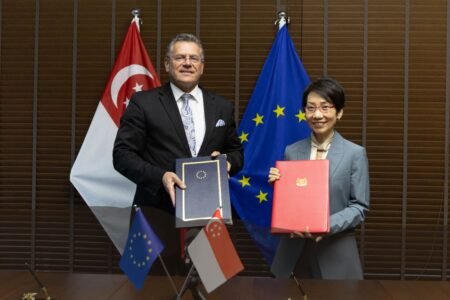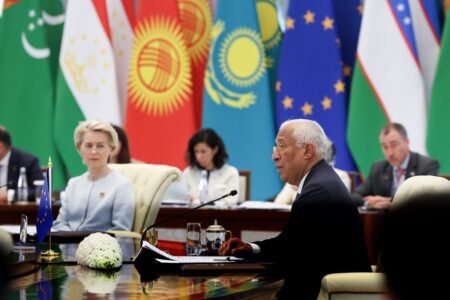— last modified 02 July 2008
Trade relations between the EU and the neighbouring Southern Mediterranean (MED) countries are governed by the Euro-Mediterranean Partnership (also referred to as the Barcelona Process), which was launched in November 1995. The partner countries are Algeria, Egypt, Israel, Jordan, Lebanon, Morocco, Syria, Tunisia and the Palestinian Authority, as well as Turkey.
Advertisement
- EU exports to the MED countries were worth around 120 billion, or 9.7 percent of total EU exports, in 2007. Imports from the MED countries represented around 7.5 percent of total EU imports, worth 107 billion, in 2007.
- EU exports to the MED countries have grown at an annual average of 8 percent since the mid- 1990s, an increase in export value of about 250 percent between 1995 and 2007. The largest average annual growth rates are recorded for the West Bank and Gaza, albeit from a low level, followed by Turkey, Morocco, Jordan and Algeria.
- The most important category of EU exports to MED countries is manufactured products, which account for 80 percent of the total (in particular machinery and transport equipment and chemicals).
- Seen from the MED countries perspective, the EU receives around 47 percent of MED exports, with an annual average growth or more than 10 percent since 1999. EU imports from the MED have thus doubled over ten years,with imports increasing most from West Bank and Gaza (again from a low level), followed by Turkey and Algeria. EU imports are dominated by fuels (22 percent of EU imports from the MED countries), textiles and clothing (18.3 percent), and machinery and transport equipment (17.5 percent).
- Among the MED countries, Turkey’s position is particular because of its custom union with the EU, its status of a candidate country of the EU, but also its demographic weight. Turkey bought 4.3 percent of EU exports (53 billion) in 2007, while providing 3.3 percent of EU imports in 2007, corresponding to some 47 billion. The annual average rate of EU export growth to Turkey between 1995 and 2007 is 12 percent. The EU mainly exports manufactured products to Turkey, especially machinery, transport equipment and chemicals.
- The relative size of MEDs long standing trade deficit with the EU has decreased over time. In the mid 1990s, the trade deficit in goods stood at more than 20 percent of bilateral EU-MED trade. More than ten years later, this deficit has shrunk to 7 percent. In the case of Turkey, the trade deficit has been reduced from 17 percent in 1995 to 6 percent in 2007. For the MED countries (excluding Turkey), this may partly be explained by the asymmetric liberalisation of trade with the EU, opening up the EU market for their most of their exports immediately, while prolonging the opening up of their own markets for 10-12 years. This also reflects higher energy prices in some cases but is also, in others, the fruit of a long process of structural and market reforms which led to an increased competitiveness.
- The EU has concluded Association Agreements with all of its MED partners which have all entered into force except the one with Syria. These agreements foresee a gradual liberalisation of trade in all industrial goods, and duty-free access for 80% of agricultural exports. These agreements have helped to double Euromed exports to the EU since 1995 and halved the region’s trade deficit with the EU to 10% of their total trade.
- Among the MED countries, Turkey’s position is particular because of its custom union with the EU, its status of a candidate country but also its demographic weight.
- Most Southern Mediterranean states are making progress in implementing economic integration with each other. North Africa remains, however, the least regionally integrated regional market in the world. The Agadir Agreement, which was signed in 2004 and entered into force in 2006, created a free trade area between Morocco, Tunisia, Jordan and Egypt but has shown mitigated results so far in terms of increase of trade flows amongst the partners. Many MED countries ((Tunisia, Morocco, Israel and Egypt) have also signed bilateral free trade agreements with Turkey .
- The launch of regional services and establishment negotiations in Marrakesh in 2007, followed by the launch of bilateral negotiations in 2008 has put this important issue front and centre. Improving terms of services trade will help attract EU investment in the Mediterranean region, which is currently clearly below potential.
- The EU has agreed to create a pan-Euromed system of cumulation to ensure that a product produced in more than one country in the region will continue to benefit from preferential access to the European Union or to other Mediterranean markets. This will mean that fabric produced in Turkey can be sewn into a shirt in Tunisia, finished in Morocco and then exported to the European Union while still benefiting from preferential access.







